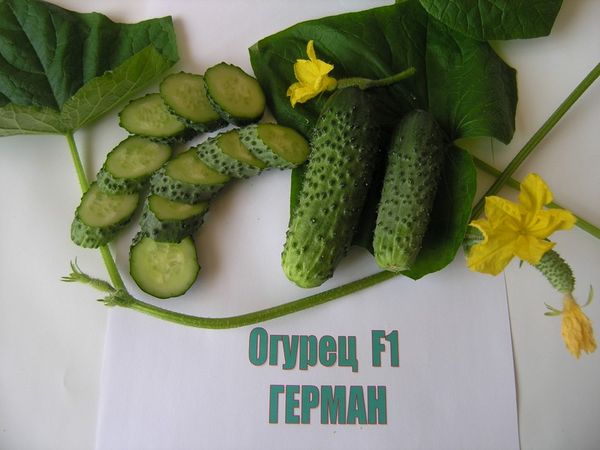In the spring and early summer, I want to crunch only a cucumber plucked from the garden. Many gardeners have no doubt what kind of crop to plant in the greenhouse or on the ridge, for getting early greenmen. Because they have long made their choice - this is Herman cucumbers.
Table of contents
Description and characteristic of a grade of cucumbers Herman
Seeds of cucumbers of the Dutch selection have long occupied their niche from our summer residents. Herman from among them, he received in Holland (firm Monsanto).Year of inclusion in the state registry - 2001. The variety can be grown both in open ground and in protected (greenhouse, greenhouse, temporary shelter).
Herman F1 is an un pollinated hybrid (partocopic), belongs to the group of early ripe cucumbers, the ripening speed is from 36 days to 40 days.
Herman is a non-pollinated plant, which means that only female flowers are formed that do not need pollination. The place of the formation of beam inflorescences - the sinuses of the leaves. In one inflorescence, ovaries can form from 4 to 6 pcs.
Fruits according to the description - kornishonny green type, length up to 10 cm. The color can be either light green or dark green, depending on the light. If the bush is formed correctly (1 stalk), the cucumbers are colored bright green. On a thickened plant the color of the fruit is more pale.
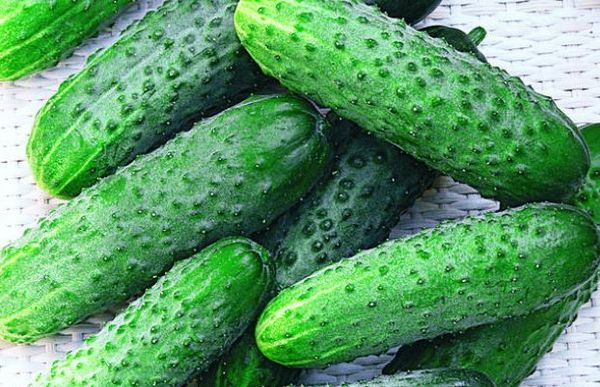
The main external characteristics of the fruit:
- Length - 10 cm.
- Diameter from 2.5 to 3 cm.
- Weight up to 100 g
- The shape is cylindrical, smooth.
- Thorns are light.
Crispy, aromatic pulp is different sweet taste, no signs of bitterness. Cucumbers Hermann, plucked in time, ideal for making light summer salads.
Beautiful greenhouses look great in banks. They are good in salting and marinade.Choosing a variety, you need to evaluate its yield. Cucumber Hermann with 95% yield gives 1 m2 up to 25 kg of fruits.
Advantages and disadvantages
| Merits | disadvantages |
| Self-sapping | Seedlings do not tolerate transplanting (picking) |
| Precocity | Lowering the temperature of soil and air does not tolerate well |
| Great taste, no bitterness | Low rust resistance |
| Yield | |
| Disease resistance | |
| Fruits do not turn yellow during storage. | |
| Versatility |
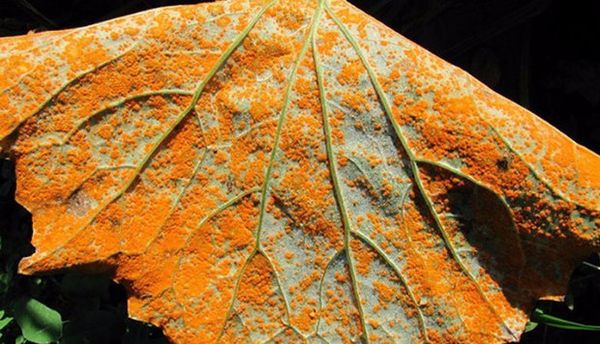
Soil requirements
The first requirement for the soil before planting - temperature.
The second requirement is fertility. It can be easily increased by adding humus, peat, sand. The combination of these components and proportions depend on the quality of the soil.
In the average version, you need to make 1 m2 of the ridge:
- 1 bucket of humus;
- ½ bucket of peat;
- ½ bucket of sand;
- superphosphate 1 tbsp. l;
- potassium nitrate 1 tbsp. l;
- ammonium nitrate 1 tbsp. l
Cucumber sowing rules
Cucumber Herman is a powerful plant for growth and development. must have enough space. When line landing rows need to be placed at intervals 60 cm. Distance from bush to bush withstand not less than 30 cm.
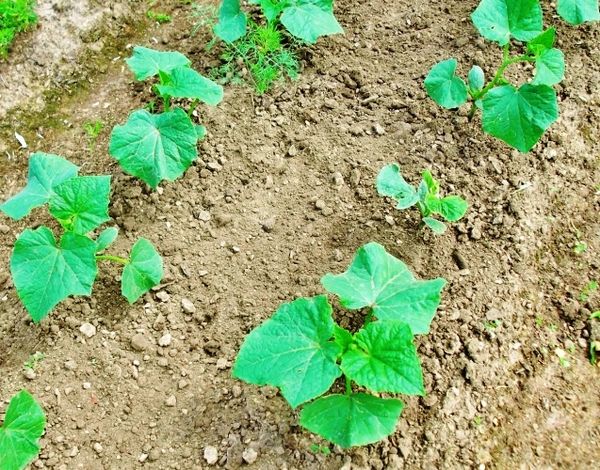
Experienced gardeners note that the yield of beam cucumbers is higher with a rare planting (40 cm).
As mentioned above, Herman F1 transplants poorly transplant, so the seeds sown on seedlings in separate containers not less than 0.5 l. To speed up germination, place cups in plastic bags. The seedling is ready for transplant at the age of 20 days, when 3 true leaves have been formed.
When sowing seeds comply with the landing scheme described above. Seeds should not be buried more than 1.5 cm. With the humidifier, to preserve moisture, mulch with humus or compost The soil temperature at planting is not less than 15 ° C.
Important meeting landing dates. They are different for open ground and greenhouses. In the ground seeds can be planted from May 26, seedlings - after June 1. In the greenhouse - in early May.
Departure after landing
All plants and cucumbers, including, require attention after planting:
- watering at least 1 time in 3 days;
- top dressing root and foliar for the whole season at least 3 times;
- weed removal;
- loosening between rows after watering;
- garter to the trellis;
- timely collection of greenberries.
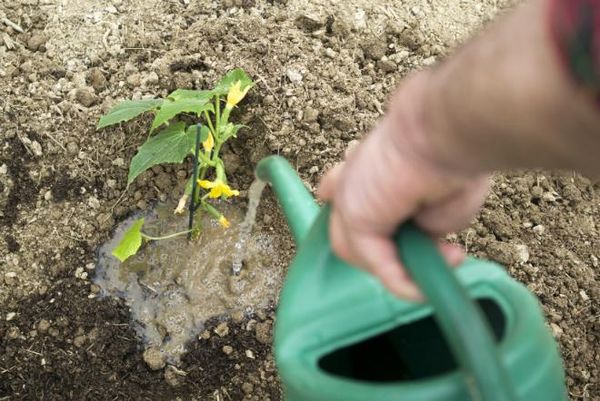
To follow the rules:
- remove all flowers and shoots from the leaf axils (1 to 4);
- leave 1 ovary in the sinuses 5-6 leaves;
- leave 2 ovaries in the axils of 7-10 leaves;
- regrown stem to throw over the trellis;
- pinch the top at 1 m from the ground.
The main mistake novice gardeners - cold water. Cucumber problems with this care: bitter fruit, developmental delay, weakened immunity.
Another mistake - abundant watering at low soil temperature (12 degrees and below). Cucumber roots absorb nutrients poorly, so you need to limit watering and not to carry out top dressing at this time.
How to get a second wave of harvest
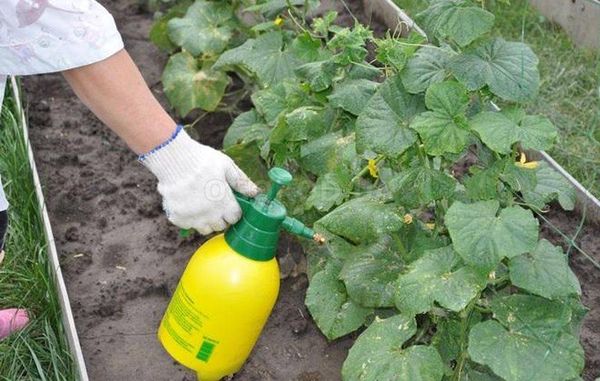
In August, the productivity of cucumbers decreases. If you do not be lazy, you can lengthen the period of fruiting - to get a second wave harvest. Ways are different. The most effective are foliar top dressing.
The first recipe: 1 liter of milk (whey), 35 drops of iodine. The second recipe: take a packet (10 g) of boric acid in 1 liter of almost boiling water, bring the resulting solution to 10 l and use as a top dressing.
In addition, the bushes to pile up. Additional roots will form that will provide additional nutrition. Remove yellowed leaves - Another way to resuscitate the cucumber bush.
Diseases and their prevention
Information for those who plan to land Herman F1. Cucumber variety susceptible to fungal infection causing disease - rust.
Symptoms of the disease:
- yellow spots on the leaf surface at the initial stage;
- brown spots in the acute phase;
- dry leaves and shoots - the result of the disease.

Preventive measures will help to avoid the disease: the first is the formation of a bush in 1 stalk, removal of damaged leaves and stems. The second measure - June processing bordeaux mixture (1%).
The development of the disease can be stopped at the initial stage (yellow spots). At this time, you can do without chemistry.Boil with boiling water 300 g of ash, let it brew.
Grate 50g household soap 72%. All mix and add water to the bucket. The resulting solution to spray sick plants in the evenings. Observe the interval between two treatments for about 7 days.
Ash not only fights infections and pests (aphids, whitefly), but also acts as a fertilizer.
Harvesting and storage rules
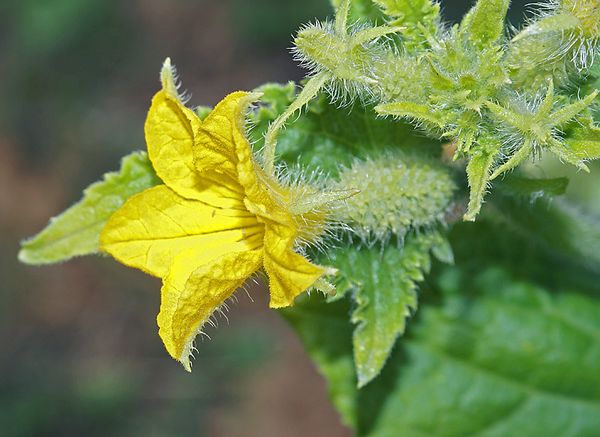
Proper collection of Zelentsov 1 time in 2 days This is a guarantee of long fruiting cucumbers Herman. Cucumbers 5-7 cm in length are suitable for pickling, 10 cm for pickles and salads.
During this time they do not turn yellow and do not lose their presentation. Cleaning is recommended in the early morning or in the evening. Beam type cucumbers do not break off, but cut with scissors.
Hybrid Herman F1 is a good choice for summer resident and farmer. This variety guarantees a stable yield. It is less susceptible to diseases than other types of cucumbers.
